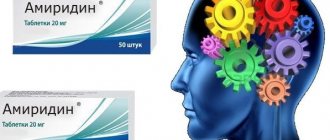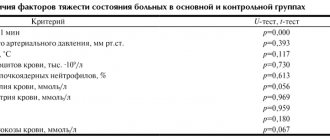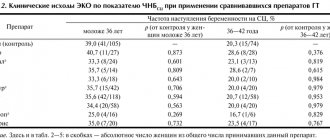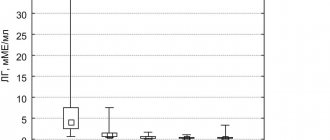Mexidol and alcohol-containing drinks
As mentioned above, Mexidol is used as a treatment for alcohol addiction. The medication reduces the degree of toxicity of alcohol-containing drinks and allows you to remove it from the body. However, this does not mean that you are allowed to drink alcohol while taking the study drug. The active enzyme Mexidol, entering the liver and brain, helps prevent the severity of poisoning, but it does not provide cell protection. This means that the effects of consumed alcohol still have a negative effect on internal organs.
mexidol tablets
Interaction with other medications
Mexidol has demonstrated itself as a medicine that has a high degree of compatibility with other drugs, including those used for the treatment of pathological phenomena in the field of neurology.
However, it is worth immediately noting that Mexidol can enhance the effect of drugs such as benzodiazepines, carbamazepine and drugs for the treatment of Parkinson's disease, hypnotics and anti-seizure drugs. This makes it possible to reduce their dosage and eliminate most signs of the clinical picture.
Mexidol reduces the toxicity and harmfulness of ethyl alcohol. This is a rather useful feature that is used when carrying out therapeutic measures against the physical and mental disorders of alcohol syndrome.
Mexidol, 30 pcs., 125 mg, film-coated tablets
Mexidol® is an inhibitor of free radical processes, a membrane protector with antihypoxic, stress-protective, nootropic, anticonvulsant and anxiolytic effects. The drug increases the body's resistance to the effects of various damaging factors (shock, hypoxia and ischemia, cerebrovascular accidents, intoxication with alcohol and antipsychotics (neuroleptics).
The mechanism of action of Mexidol® is due to its antioxidant, antihypoxic and membrane protective effects. It inhibits lipid peroxidation, increases the activity of superoxide dismutase, increases the lipid-protein ratio, reduces membrane viscosity, and increases its fluidity.
Mexidol® modulates the activity of membrane-bound enzymes (calcium-independent phosphodiesterase, adenylate cyclase, acetylcholinesterase), receptor complexes (benzodiazepine, GABA, acetylcholine), which enhances their ability to bind to ligands, helps preserve the structural and functional organization of biomembranes, neurotransmitter transport and improve synaptic transmission.
Mexidol® increases the content of dopamine in the brain. Causes an increase in compensatory activation of aerobic glycolysis and a decrease in the degree of inhibition of oxidative processes in the Krebs cycle under hypoxic conditions with an increase in the content of ATP and creatine phosphate, activation of the energy-synthesizing functions of mitochondria, stabilization of cell membranes. The drug improves metabolism and blood supply to the brain, improves microcirculation and rheological properties of blood, and reduces platelet aggregation. Stabilizes the membrane structures of blood cells (erythrocytes and platelets) during hemolysis. It has a lipid-lowering effect, reduces the content of total cholesterol and LDL.
The anti-stress effect is manifested in the normalization of post-stress behavior, somatovegetative disorders, restoration of sleep-wake cycles, impaired learning and memory processes, reduction of dystrophic and morphological changes in various structures of the brain.
Mexidol® has a pronounced antitoxic effect in withdrawal symptoms. It eliminates the neurological and neurotoxic manifestations of acute alcohol intoxication, restores behavioral disorders, autonomic functions, and is also able to relieve cognitive impairment caused by long-term use of ethanol and its withdrawal.
Under the influence of Mexidol®, the effect of tranquilizing, neuroleptic, antidepressant, hypnotics and anticonvulsants is enhanced, which makes it possible to reduce their doses and reduce side effects.
Mexidol® improves the functional state of ischemic myocardium. In conditions of coronary insufficiency, it increases collateral blood supply to the ischemic myocardium, helps maintain the integrity of cardiomyocytes and maintain their functional activity. Effectively restores myocardial contractility in reversible cardiac dysfunction.
The role and place of Mexidol in the treatment of metabolic syndrome
MS is based on tissue insulin resistance (IR), arterial hypertension (AH), dyslipidemia, and abdominal obesity. In the presence of IR, a decrease in the production of nitric oxide occurs, as a result of which increased sensitivity of the vascular wall to the action of vasoconstrictors is formed, and the processes of endothelium-dependent vasodilation are disrupted. In recent years, the attention of researchers has been drawn to the study of the state of the vascular endothelium in various diseases. The formation of hypertensive conditions, ischemic heart disorders, changes in homeostasis, metabolic disorders such as hypercholesterolemia and hyperglycemia, leading to the occurrence of atherosclerosis, diabetes, obesity, etc., is caused by changes in endothelial function, and primarily by disturbances in the production of dilatative and constrictor substances, as well as factors regulating the interaction of endothelium with blood cells. It is now known that risk factors, such as hypertension, obesity, dyslipidemia, largely realize their pathological influence precisely through endothelial dysfunction.
MetS occurs in 10–15% of people with impaired glucose tolerance (IGT), in 42–64% of people with impaired fasting glucose, and in 78–84% of patients with type 2 diabetes. The frequency of MS increases significantly with age, while in persons aged 20–29 years it is detected in 6.7% of persons, in persons aged 60–69 years – in 43.5%, and over 70 years – in 42% of those examined.
The purpose of the study was to study the clinical effectiveness of the drug Mexidol (2-ethyl-6-methyl-3-hydroxypyridine succinate, pharmaceutical, Russia) in the complex therapy of patients with MS.
Materials and methods
The study included 40 men with MS aged 37–41 years. The average body weight of the patients was 102.3±14.7 kg, body mass index (BMI) was 37.2±2.7, and the duration of obesity was 6 years. Type 2 diabetes was detected in 18 patients, IGT – in 22 patients. All patients were diagnosed with hypertension, which lasted an average of 5 years. 15 patients had AH of the 1st degree, 25 had AH of the 2nd degree.
The patients were divided into 2 groups depending on the treatment provided. The control group (n=20) included patients who received antihypertensive (enalapril 10–20 mg/day) and hypoglycemic therapy (metformin at a dose of 1.5–2.0 g/day); in the main group (n=20), patients, in addition to enalapril and metformin, took Mexidol in a daily dose of 0.75 g. Patients were examined before and after 4 weeks of this therapy. All patients were assessed for anthropometric parameters: body weight, BMI, waist circumference. The levels of total cholesterol (TC), triglycerides (TG) and high-density lipoprotein cholesterol (HDL-C) were determined using a colorimetric enzymatic method. The level of other cholesterol fractions and the atherogenic coefficient (AC) - by calculation method. The study of the level of circulating blood endothelial cells (CEC) was carried out using the method of Hladovec J. (1978) as modified by N.N. Petrishcheva and L.P. Papayan (1999). The method for determining CEC is based on the isolation of endothelial cells along with platelets, followed by sedimentation of platelets using adenosine phosphate. When counting CECs in a phase-contrast microscope, their number more than 5 in the field of view was regarded as endothelemia. Brachial artery diameter measurements, which were performed 5 minutes after reactive hyperemia, were assessed using a 7 MHz linear transducer on an Acuson 128xP10 ultrasound system. To determine the level of cortisol (F), corticosterone (B), 11-deoxycorticosterone (DOC), 11-deoxycortisol (S) in the blood and the excretion of free cortisol (UFF), free cortisone (UFE) in urine, we used the reverse-phase high-performance liquid method. chromatography (RP HPLC). Aldosterone (A) and insulin levels before and 2 hours after an oral load of 75 g of glucose were determined by radioimmunoassay.
Research results
It should be noted that anthropometric indicators in patients of both groups did not differ significantly before treatment. During 4 weeks of treatment, there was a decrease in body weight, waist circumference, and improvement in hemodynamic parameters in the observed groups without a statistically significant difference (Table 1).
When assessing the effect of Mexidol on the main indicators of lipid metabolism after 4 weeks, more pronounced changes compared to the control were noted in patients of the main group. Thus, in the group of patients in whose treatment Mexidol was used, a statistically significant decrease in total cholesterol (from 6.6±0.55 to 5.1±0.54 mmol/l), triglycerides (from 2.6±0.48 up to 1.4±0.78 mmol/l) (p≤0.05); There was a tendency towards a decrease in LDL, the atherogenic coefficient and an increase in HDL compared to the control group (p≥0.05) (Table 2).
A study of endothelial function in patients with MS before treatment revealed its impairment in the main and control groups to an equal extent (by 5.3%). By the 4th week of treatment, an increase in endothelium-dependent vasodilation was noted in both groups, however, only in the main group this increase turned out to be statistically significant (Fig. 1).
When assessing such a parameter of endothelial dysfunction in MS as the number of endothelial cells, its increase was revealed in both groups, the average value was 11x104/l. During the treatment, a decrease in endothelial dysfunction was noted: in the control group, the number of endothelial cells decreased to 8.1x104/l, in the main group - to 6.3x104/l (p≤0.05) (Fig. 2).
An important factor contributing to the disruption of microcirculation and endothelial function is the high level of fibrinogen and prothrombin in the blood serum. When determining these indicators in the blood, it turned out that in patients in the control group, the fibrinogen level did not undergo significant changes during treatment, while in the main group by the 4th week there was a decrease from 3.7 to 2.8 g/l (Fig. 3).
In patients of the study groups, a gradual decrease (by the 4th week of treatment) in the level of prothrombin in the blood was noted, however, this decrease in the main group turned out to be more significant compared with the initial values (p≤0.05) and the control group (p≥0.05 ) (Fig. 4).
In patients with MS and visceral obesity, liver dysfunction is often detected due to steatohepatitis against the background of excess body weight. The study showed that the inclusion of Mexidol in the complex therapy of patients with MS led to an improvement in liver function, which was manifested by a decrease in the level of ALT and γ-GTP by the 4th week of treatment (Fig. 5 and 6).
When studying hormonal levels (adrenal hormones, insulin on an empty stomach and 2 hours after a load of 75 g of glucose), it was revealed that the inclusion of Mexidol in the complex therapy of patients led to a decrease in these indicators in patients of the main group (Table 3).
Thus, it was noted that the decrease in the ratio of cortisol excretion and blood cortisone excretion was statistically significant (from 4.3±0.15 to 3.7±0.45).
The results obtained are of interest, since they once again confirm the effectiveness of taking Mexidol in the presence of MS. The complex treatment of MS without the use of Mexidol is not accompanied by an improvement in basic biochemical parameters. During the study, we did not encounter a single case of worsening carbohydrate metabolism or electrolyte disturbances in patients in both study groups.
The results obtained indicate the safety of long-term use of Mexidol by patients (for 4 weeks) suffering from a complex of diseases, which are based not only on insulin resistance and hyperinsulinemia, but also on disorders of lipid metabolism, microcirculation, and endothelial dysfunction. The complex therapy carried out in patients with MS using Mexidol was not accompanied by a decrease in the effectiveness of the antihypertensive and hypoglycemic drugs used.
conclusions
1. The use of Mexidol in the complex therapy of MS helps reduce blood cholesterol and triglycerides.
2. The use of Mexidol in complex therapy of patients with MS leads to a decrease in the severity of endothelial dysfunction.
3. The use of Mexidol leads to a decrease in the level of prothrombin and fibrinogen, which can help improve microcirculation.
4. A decrease in insulin production in patients with MS during treatment with Mexidol may be associated with a decrease in the production of corticosteroids belonging to the group of contrainsular hormones.
5. Mexidol improves hepatotropic liver function in the treatment of MS.
6. The drug Mexidol is well tolerated by patients and is safe during a 4-week course of treatment for MS at a dose of 0.75 g.
7. Mexidol is effectively combined with other drugs in the complex therapy of patients with MS.
Literature 1. Almazov V.A., Blagosklonnaya Ya.V., Shlyakhto E.V., Krasilnikova E.I. Metabolic cardiovascular syndrome. – St. Petersburg: St. Petersburg State Medical University, 1999. – 48 s. 2. Bulakhova E.Yu. Use of the drug "Mexidol" to optimize the treatment of arterial hypertension in young patients. // Bulletin of experimental biology and medicine. – 2006. – Appendix 1. – p. 101–103. 3. Butrova S.A. Obesity (etiology, pathogenesis, classification) // Obesity. Metabolic syndrome. Diabetes mellitus type 2 / ed. I.I. Dedova. – M: Medicine, 2000. – P.12–13. 4. Voronina T.A. New generation domestic drug Mexidol, main effects, mechanism of action, application. M., 2003. 5. Obesity. Guide for doctors / Ed. N.A.Belyakova, V.I.Mazurova. – St. Petersburg, 2003. – 519. 6. Smirnova O.M., Nikonova T.V. Free radical oxidation and antioxidant protection in diabetes mellitus. A manual for doctors / Ed. I.I. Dedova. M., 2003. 7. Starostina E.G. Biguanides: rebirth // New Medical Journal. – 1998. – No. 1. – p.2–8. 8. Okovity S.V. Clinical pharmacology of antihypoxants. 2005. Part II. Vol. 7. P.48–63.
Mexidol 50mg/ml 5ml 5 pcs. solution for intravenous and intramuscular administration
pharmachologic effect
Antioxidant agent.
Means for the correction of disorders in alcoholism, toxic and drug addiction.
Composition and release form Mexidol 50 mg/ml 5 ml 5 pcs. solution for intravenous and intramuscular administration
- Active ingredient: ethylmethylhydroxypyridine succinate – 50 mg.
- Excipients: sodium metabisulfite – 0.4 mg; water for injections up to 1 ml.
Solution for intravenous and intramuscular administration 50 mg/ml in colorless or light-protective glass ampoules with a blue break point or a white break point and three marking rings (top - yellow, middle - white, bottom - red) 2 ml or 5 ml . 5 ampoules in a blister pack. 1 or 2 blister packs along with instructions for medical use in a cardboard pack. 4, 10 or 20 blister packs along with instructions for medical use in a box of cardboard (for hospitals).
Description of the dosage form
Colorless or slightly yellowish transparent liquid in ampoules of 2 or 5 ml.
Directions for use and doses
IM or IV (stream or drip). When administered by infusion, the drug should be diluted in 0.9% sodium chloride solution.
Mexidol® is administered slowly over 5–7 minutes in a stream, and dropwise at a rate of 40–60 drops per minute. The maximum daily dose should not exceed 1200 mg.
For acute cerebrovascular accidents, Mexidol® is used in the first 10–14 days - 200–500 mg IV drip 2–4 times a day, then 200–250 mg IM 2–3 times a day for 2 weeks .
For traumatic brain injury and the consequences of traumatic brain injuries, Mexidol® is used for 10-15 days intravenously at a dose of 200–500 mg 2–4 times a day.
For dyscirculatory encephalopathy in the decompensation phase, Mexidol® should be prescribed intravenously in a stream or drip at a dose of 200–500 mg 1–2 times a day for 14 days. Then IM 100–250 mg/day over the next 2 weeks.
For a course of prophylaxis of discirculatory encephalopathy, the drug is administered intramuscularly at a dose of 200–250 mg 2 times a day for 10–14 days.
For mild cognitive impairment in elderly patients and anxiety disorders, the drug is used intramuscularly at a daily dose of 100–300 mg/day for 14–30 days.
In case of acute myocardial infarction, as part of complex therapy, Mexidol® is administered intravenously or intramuscularly for 14 days, against the background of traditional therapy for myocardial infarction, including nitrates, beta-blockers, angiotensin-converting enzyme (ACE) inhibitors, thrombolytics, anticoagulant and antiplatelet agents, as well as symptomatic means according to indications.
In the first 5 days, to achieve maximum effect, it is advisable to administer the drug intravenously; in the next 9 days, Mexidol® can be administered intramuscularly.
Intravenous administration of the drug is carried out by drip infusion, slowly (to avoid side effects) in a 0.9% sodium chloride solution or 5% dextrose (glucose) solution in a volume of 100–150 ml for 30–90 minutes. If necessary, a slow jet injection of the drug, lasting at least 5 minutes, is possible.
The drug is administered (intravenous or intramuscular) 3 times a day, every 8 hours. The daily therapeutic dose is 6-9 mg/kg body weight per day, a single dose is 2-3 mg/kg body weight. The maximum daily dose should not exceed 800 mg, single dose - 250 mg.
For open-angle glaucoma of various stages, as part of complex therapy, Mexidol® is administered intramuscularly at 100–300 mg/day, 1–3 times a day for 14 days.
For alcohol withdrawal syndrome, Mexidol® is administered in a dose of 200–500 mg intravenously or intramuscularly 2–3 times a day for 5–7 days.
In case of acute intoxication with antipsychotic drugs, the drug is administered intravenously at a dose of 200-500 mg/day for 7-14 days. In acute purulent-inflammatory processes of the abdominal cavity (acute necrotizing pancreatitis, peritonitis), the drug is prescribed on the first day both in the preoperative and postoperative periods. The administered doses depend on the form and severity of the disease, the prevalence of the process, and variants of the clinical course. The drug should be discontinued gradually only after a stable positive clinical and laboratory effect.
For acute edematous (interstitial) pancreatitis, Mexidol® is prescribed 200–500 mg 3 times a day, intravenously (in 0.9% sodium chloride solution) and intramuscularly. Mild severity of necrotizing pancreatitis - 100-200 mg 3 times a day intravenously (in 0.9% sodium chloride solution) and intramuscularly. Moderate severity - 200 mg 3 times a day intravenously (in 0.9% sodium chloride solution). Severe course - in a pulse dosage of 800 mg on the first day with a double dose regimen; then 200–500 mg 2 times a day with a gradual reduction in the daily dose. Extremely severe course - at an initial dosage of 800 mg/day until the manifestations of pancreatogenic shock are persistently relieved, after stabilization of the condition, 300-500 mg 2 times a day intravenously (in 0.9% sodium chloride solution) with a gradual decrease in the daily dosage.
Pharmacodynamics
It has antihypoxic, membrane-protective, nootropic, anticonvulsant, anxiolytic effects, and increases the body's resistance to stress. The drug increases the body's resistance to the effects of major damaging factors, to oxygen-dependent pathological conditions (shock, hypoxia and ischemia, cerebrovascular accident, intoxication with alcohol and antipsychotic drugs (neuroleptics)).
Mexidol improves cerebral metabolism and blood supply to the brain, improves microcirculation and rheological properties of blood, and reduces platelet aggregation.
Stabilizes the membrane structures of blood cells (erythrocytes and platelets) during hemolysis.
It has a hypolipidemic effect, reduces the level of total cholesterol and LDL.
Reduces enzymatic toxemia and endogenous intoxication in acute pancreatitis.
The mechanism of action of Mexidol is due to its antihypoxic, antioxidant and membrane protective effects. It inhibits the processes of lipid peroxidation, increases the activity of superoxide dismutase, increases the lipid-protein ratio, reduces membrane viscosity, and increases its fluidity. Modulates the activity of membrane-bound enzymes (calcium-independent phosphodiesterase, adenylate cyclase, acetylcholinesterase), receptor complexes (benzodiazepine, GABA, acetylcholine), which enhances their ability to bind to ligands, helps preserve the structural and functional organization of biomembranes, transport of neurotransmitters and improve synaptic transmission.
Mexidol increases dopamine levels in the brain. Causes an increase in the compensatory activity of aerobic glycolysis and a decrease in the degree of inhibition of oxidative processes in the Krebs cycle under hypoxic conditions, with an increase in the content of ATP, creatine phosphate and activation of the energy-synthesizing functions of mitochondria, stabilization of cell membranes. Mexidol normalizes metabolic processes in the ischemic myocardium, reduces the necrosis zone, restores and improves the electrical activity and contractility of the myocardium, and also increases coronary blood flow in the ischemic zone, reduces the consequences of reperfusion syndrome in acute coronary insufficiency. Increases the antianginal activity of nitro drugs. Mexidol promotes the preservation of retinal ganglion cells and optic nerve fibers during progressive neuropathy, the causes of which are chronic ischemia and hypoxia. Improves the functional activity of the retina and optic nerve, increasing visual acuity.
Pharmacokinetics
With intramuscular administration, it is determined in the blood plasma for 4 hours after administration. The time to reach the maximum concentration Tmax is 0.45-0.5 hours. Cmax when administering a dose of 400-500 mg is 3.5-4.0 μg/ml. Mexidol quickly passes from the bloodstream into organs and tissues and is quickly eliminated from the body. The drug retention time (MRT) is 0.7-1.3 hours. The drug is excreted mainly in the urine, mainly in glucurone-conjugated form and in small quantities unchanged.
Indications for use Mexidol 50 mg/ml 5 ml 5 pcs. solution for intravenous and intramuscular administration
- acute cerebrovascular accidents;
- traumatic brain injury, consequences of traumatic brain injury;
- iscirculatory encephalopathy;
- autonomic dystonia syndrome;
- mild cognitive disorders of atherosclerotic origin;
- anxiety disorders in neurotic and neurosis-like conditions;
- acute myocardial infarction (from the first day) as part of complex therapy;
- primary open-angle glaucoma of various stages, as part of complex therapy;
- relief of withdrawal syndrome in alcoholism with a predominance of neurosis-like and vegetative-vascular disorders;
- acute intoxication with antipsychotic drugs;
- acute purulent-inflammatory processes of the abdominal cavity (acute necrotizing pancreatitis, peritonitis) as part of complex therapy.
Contraindications
- Acute dysfunction of the liver and kidneys, increased individual sensitivity to the drug. Strictly controlled clinical studies of the safety of the drug
- Mexidol has not been used in children, pregnancy or breastfeeding.
special instructions
In some cases, especially in predisposed patients with bronchial asthma with increased sensitivity to sulfites, severe hypersensitivity reactions may develop.
Overdose
In case of overdose, drowsiness may develop.
Side effects Mexidol 50 mg/ml 5 ml 5 pcs. solution for intravenous and intramuscular administration
Nausea and dry mouth, drowsiness, and allergic reactions may occur.
Drug interactions
Enhances the effect of benzodiazepine anxiolytics, anticonvulsants (carbamazepine), antiparkinsonian drugs (levodopa). Reduces the toxic effects of ethyl alcohol.
Side effects
Despite the fact that the body, as a rule, takes the drug positively, and the drug itself has a low level of toxicity, it still has side effects that are prescribed in Mexidol's instructions for use; you can read reviews on the Internet.
- If we consider the cardiovascular system, then this includes: a significant increase or decrease in blood pressure.
- Nervous system: fatigue, anxiety, excessive emotionality, pain, dysfunction of the vestibular apparatus.
- Gastrointestinal tract: vomiting, dehydration, which contributes to severe thirst.
- The body's immune system: the appearance of allergic reactions (rashes on the skin, scabies).
- Other criteria: distal hyperhidrosis.
Mexidol in ampoules
Analogs
The pharmaceutical market sells not only Mexidol, but also its analogues (see Mexidol instructions for use analogues ). The products differ in their composition, that is, the main substance, additional ingredients, manufacturers, and the quality of purification of the materials used. For this reason, after receiving consultation recommendations from pharmacies, you can choose medications for yourself that are similar in their characteristics and purpose to Mexidol tablets.
Similar analogues include:
- Medomexy;
- Mexiprim;
- Mexidant;
- Mexipridol;
- Mexicofin;
- Neurox;
- Cerecard.
In accordance with the therapeutic effect, the following agents are considered identical to the suspension solution:
- Medomexy;
- Armadin;
- Mexico;
- Astrox;
- Mexipridol;
- Mexiprim.
Naturally, the required effect can be achieved with the help of other substances, however, it is worth remembering that not in all cases analogues may be perfect as an alternative to a drug prescribed by a doctor, so replacements should be made only after the recommendations of a qualified doctor.
Mexidol® (Mexidolum®)
Mexidol® is an inhibitor of free radical processes, a membrane protector with antihypoxic, stress-protective, nootropic, anticonvulsant and anxiolytic effects. The drug increases the body's resistance to the effects of various damaging factors (shock, hypoxia and ischemia, cerebrovascular accidents, intoxication with alcohol and antipsychotics (neuroleptics)).
The mechanism of action of Mexidol® is due to its antioxidant, antihypoxic and membrane protective effects. It inhibits lipid peroxidation, increases the activity of superoxide dismutase, increases the lipid-protein ratio, reduces membrane viscosity, and increases its fluidity. Mexidol® modulates the activity of membrane-bound enzymes (calcium-independent phosphodiesterase, adenylate cyclase, acetylcholinesterase),
Receptor complexes (benzodiazepine, GABA, acetylcholine), which enhances their ability to bind to ligands, helps preserve the structural and functional organization of biomembranes, transport of neurotransmitters and improve synaptic transmission. Mexidol® increases the content of dopamine in the brain. Causes an increase in compensatory activation of aerobic glycolysis and a decrease in the degree of inhibition in oxidative processes in the Krebs cycle. Under hypoxic conditions, with an increase in the content of ATP and creatine phosphate, activation of the energy-synthesizing functions of mitochondria, stabilization of cell membranes.
The drug improves metabolism and blood supply to the brain, improves microcirculation and rheological properties of blood, and reduces platelet aggregation. Stabilizes the membrane structures of blood cells; (erythrocytes and platelets) with hemolysis. It has a lipid-lowering effect, reduces the content of total cholesterol and low-density lipoproteins.
The anti-stress effect is manifested in the normalization of post-stress behavior, somatovegetative disorders, restoration of sleep-wake cycles, impaired learning and memory processes, reduction of dystrophic and morphological changes in various structures of the brain.
Mexidol® has a pronounced antitoxic effect in withdrawal symptoms. It eliminates the neurological and neurotoxic manifestations of acute alcohol intoxication, restores behavioral disorders, autonomic functions, and is also able to relieve cognitive impairment caused by long-term use of ethanol and its withdrawal. Under the influence of Mexidol®, the effect of tranquilizing, neuroleptic, antidepressant, hypnotics and anticonvulsants is enhanced, which makes it possible to reduce their doses and reduce side effects. Mexidol® improves the functional state of ischemic myocardium. In conditions of coronary insufficiency, it increases collateral blood supply to the ischemic myocardium, helps maintain the integrity of cardiomyocytes and maintain their functional activity. Effectively restores myocardial contractility in reversible cardiac dysfunction.
Indications for use
In the field of neurology, the medication is used in the following situations:
- impaired blood circulation in the brain and discirculatory encephalopathy, occurring in an acute form,
- after the above-mentioned ischemic type disorder,
- vegetative-vascular dystonia,
- impairment of basic human cognitive abilities.
In the field of psychiatry, the drug is prescribed in the following situations:
- to relieve the severity of alcohol or drug addiction, if there is such a need,
- in case of poisoning with drugs that are produced for therapeutic actions against psychosis,
- to reduce the influence of irritating factors,
- with worries and excessive feelings of anxiety, which provoke corresponding behavior.
In addition, the product is used in the presence of acute pathological processes occurring in the abdominal cavity. This drug is included in a set of therapeutic treatments.






